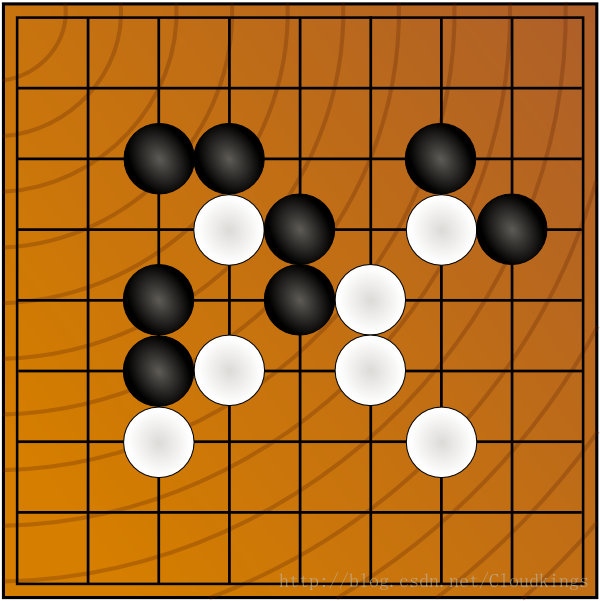- 作者:老汪软件技巧
- 发表时间:2024-09-22 17:00
- 浏览量:
介绍
享元模式(Flyweight Pattern)是一种结构性设计模式,旨在通过共享对象来有效地支持大量细粒度的对象。
1.定义
享元模式通过将对象状态分为内部状态(可以共享)和外部状态(不可共享),来减少内存使用和提高性能。
2. 主要作用3. 解决的问题
当程序中存在大量相似对象时,使用享元模式可以有效减少内存占用,避免重复对象的创建。
4. 模式原理
包含角色:
Flyweight: 抽象享元类,定义了享元对象的接口。ConcreteFlyweight: 具体享元类,实现了抽象享元类的接口,负责存储内部状态。FlyweightFactory: 享元工厂类,用于创建和管理享元对象,确保共享。
UML类图:
示例:模拟一个图形绘制的场景,其中使用享元模式共享相同的图形对象(如圆):
// 享元接口
interface Shape {
void draw(String color);
}
// 具体享元类
class Circle implements Shape {
private String color;
public Circle(String color) {
this.color = color;
System.out.println("Creating Circle of color: " + color);
}
@Override
public void draw(String color) {
System.out.println("Drawing Circle of color: " + color);
}
}
// 享元工厂类
class ShapeFactory {
private static final Map circleMap = new HashMap<>();
public static Shape getCircle(String color) {
Circle circle = (Circle) circleMap.get(color);
if (circle == null) {
circle = new Circle(color);
circleMap.put(color, circle);
}
return circle;
}
}
// 使用
public class FlyweightPatternDemo {
public static void main(String[] args) {
ShapeFactory shapeFactory = new ShapeFactory();
// 共享相同颜色的圆
Shape circle1 = shapeFactory.getCircle("Red");
circle1.draw("Red");
Shape circle2 = shapeFactory.getCircle("Green");
circle2.draw("Green");
Shape circle3 = shapeFactory.getCircle("Red");
circle3.draw("Red");
System.out.println("Total Circles created: " + ShapeFactory.circleMap.size());
}
}
打印输出:
Creating Circle of color: Red
Drawing Circle of color: Red
Creating Circle of color: Green
Drawing Circle of color: Green
Drawing Circle of color: Red
Total Circles created: 2

,从这个简单的示例,你会发现享元模式其实很简单,就是共享对象 复用对象,一般开发中并不常用。
在安卓中 Handler的Message 就使用了享元模式,因为在安卓中 几乎所有事件驱动都是通过Message来进行的,可以说它无处不在,这时候就可以使用享元模式以优化内存使用和提高性能。
下面就以 Message 为例,从源码角度剖析其实现原理!
Message 的池化机制在 Message 类中,有一个静态的对象池,用于存放可重用的 Message 实例。
public static final Object sPoolSync = new Object();
private static Message sPool;//这是一个链表的头指针,指向池中可重用的 Message 对象
private static int sPoolSize = 0;//记录池中当前的对象数量。
private static final int MAX_POOL_SIZE = 50;//定义池的最大容量。
private static boolean gCheckRecycle = true;//一个标志位,用于检查回收的消息是否有效。
/**
* Return a new Message instance from the global pool. Allows us to
* avoid allocating new objects in many cases.
*/
public static Message obtain() {
synchronized (sPoolSync) {
if (sPool != null) {
Message m = sPool;
sPool = m.next;
m.next = null;
m.flags = 0; // clear in-use flag
sPoolSize--;
return m;
}
}
return new Message();
}
public void recycle() {
if (isInUse()) {
if (gCheckRecycle) {
throw new IllegalStateException("This message cannot be recycled because it "
+ "is still in use.");
}
return;
}
recycleUnchecked();
}
/**
* Recycles a Message that may be in-use.
* Used internally by the MessageQueue and Looper when disposing of queued Messages.
*/
@UnsupportedAppUsage
void recycleUnchecked() {
// Mark the message as in use while it remains in the recycled object pool.
// Clear out all other details.
flags = FLAG_IN_USE;
what = 0;
arg1 = 0;
arg2 = 0;
obj = null;
replyTo = null;
sendingUid = UID_NONE;
workSourceUid = UID_NONE;
when = 0;
target = null;
callback = null;
data = null;
synchronized (sPoolSync) {
if (sPoolSize < MAX_POOL_SIZE) {
next = sPool;
sPool = this;
sPoolSize++;
}
}
}
这里所谓的池 并不是一个集合容器 而是 Message 对象通过 next 属性构成一个链表。每个 Message 对象可以指向下一个可用的 Message,实现了简单的对象池。
当对象不再需要时(如在处理完消息后),调用recycle()可以将其放回池中(通过设置 next 指向池头 sPool),这样下次调用 obtain 时就能复用这些对象,而不是每次都新建。
在调用recycle()可以发现 有一个 isInUse()方法判断这个Message是否正在使用,这个其实不用开发者操心的,因为所有的消息都要经过Looper这个 "传送带",内部自动回收,翻开Looper的源码文件你会发现在loopOnce方法中最后会调用 msg.recycleUnchecked(),如果你进行了某种自定义操作,导致 Message 未能通过正常的 Handler 流程处理,那么你可能需要手动调用 msg.recycle()。
简单概括就是:一条由Message 组成的链表,你想用Message时,就从这个链表上 掐掉一个Message来使用,这个掐掉操作就是将m.next = null,当你不再使用时 就将其放回到链表头,操作就是 next = sPool 和sPool = this。
5. 优缺点
优点:
节省内存空间。提高性能,特别是创建和管理大量对象时。
缺点:
外部状态管理可能导致系统逻辑混乱。6. 应用场景7. 总结
享元模式通过共享对象来优化内存使用和性能,适合于需要创建大量相似对象的场景,但设计复杂性和状态管理需要谨慎处理。




